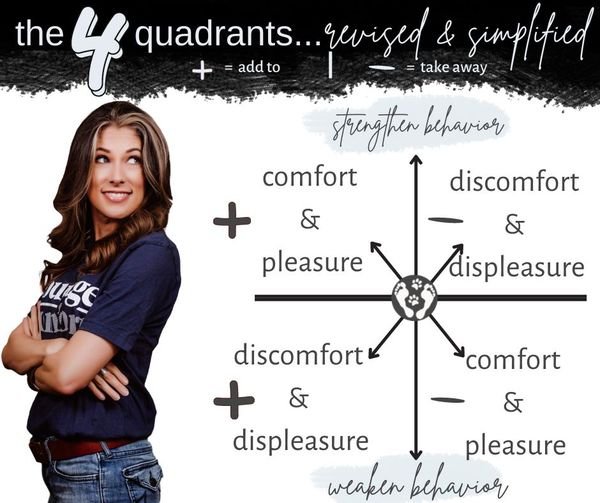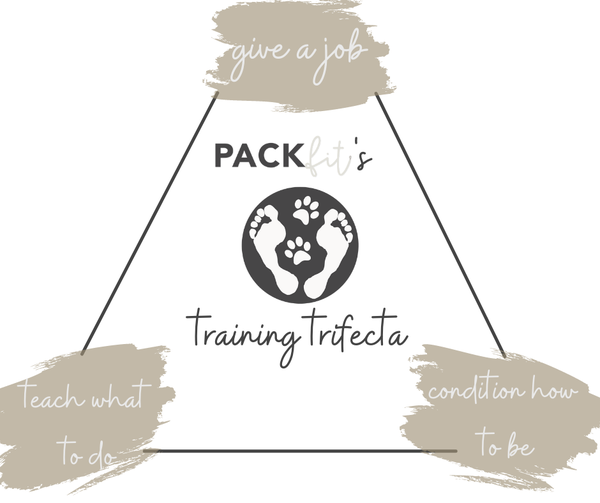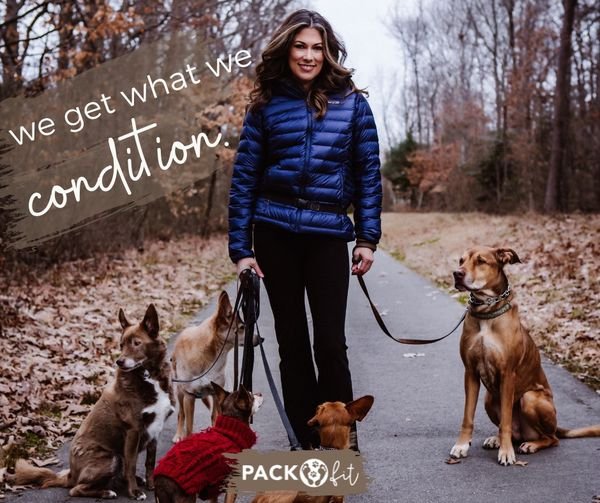
Understanding the Excitement Spectrum
Much like a wagging tail doesn't always mean a "friendly" dog, an overly aroused, overly excited, super juiced and jacked up dog doesn't always mean a "happy" dog.

To treat or not to treat…that is the question.
Food is one of the most misused dog training tools out there.
Unfortunately, the general public has been conditioned to use food for practically everything when it comes to their dogs; leaving many feeling frustrated, confused, stressed, etc. when things don't go as intended (on both ends of the leash).

The 4 Quadrants of Operant Conditioning. Revised and simplified.
So, here we go. The 4 quadrants of "operant conditioning" ... revised and simplified.


We get what we condition.
There's a popular saying in the dog training world, "we get what we reinforce." And this is a truth! Whatever is marked and rewarded will continue to occur. This is far more difficult than most realize, as we're oftentimes completely unaware of what our bodies may be doing in connection with the reinforcement, our criteria may be a bit vague, and the process tends to be a bit sloppy overall.

Start small to go big.
Dog training and behavior modification is a big job with a ton of smaller moving parts, and often comes with a big expectations. There's usually a deep sense of urgency in play (due to the fact most wait until behaviors get so bad, so risky, and so intolerable before they invest in help), as well as a mindset that throwing money at a problem will make it go away and dog trainers are "fairy dog-mothers" (or fathers) with magic wands. There's an expectation for big results...without taking the smaller, necessary steps to reach them or any level of involvement.

